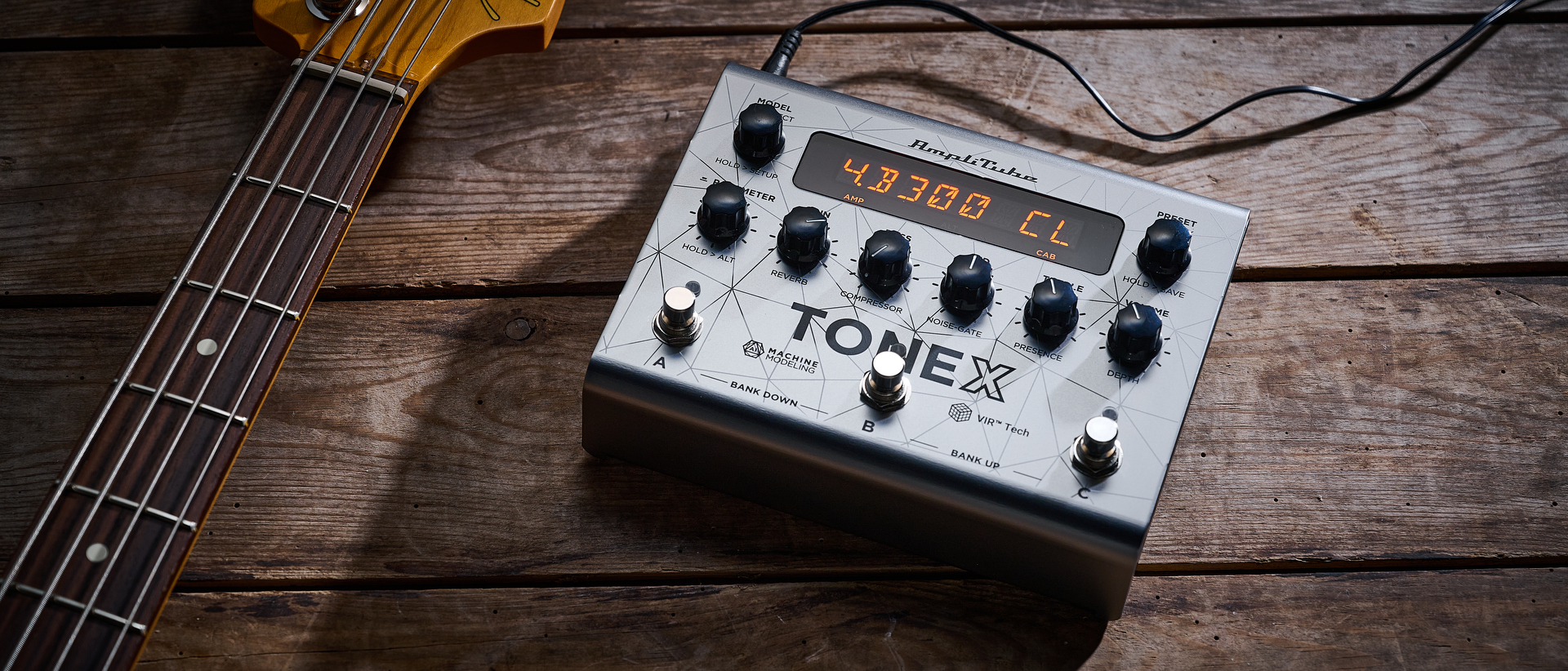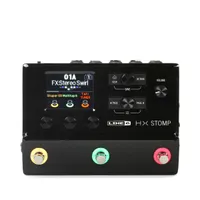MusicRadar Verdict
Overall, the TONEX Pedal Bass Edition dishes-up over and above the number of traditional bass sounds you're likely to need. With a DI box and some time to learn the layout, it's a robust, reliable and ridiculously well-equipped powerhouse for the stage and studio.
Pros
- +
Fantastic, comprehensive range of bass amp sounds
- +
Well put together for durability
- +
Practically limitless preset exploration
Cons
- -
It's tricky to use purely as hardware until you get your bearings
- -
Connectivity isn't tailored to playing live
MusicRadar's got your back
Name: What is it?
IK Multimedia’s TONEX ecosystem has evolved from software to hybrid hardware, delivering the concept of a pedal-based front end to the masses since it launched in 2023. But until now, it’s been aimed primarily at guitar players. TONEX Pedal Bass Edition sees IK aiming squarely at lowenders by applying the same technology, cramming dozens of the greatest bass amps in history into a bass guitar-centric box.
For the uninitiated, though, here’s a recap. TONEX is a multifaceted solution to going direct. Much like we’ve seen present in amp modellers from the likes of Kemper, Line 6 and Neural, at its heart sits the ability to digitally harness the sound of a pedal, amp or speaker cabinet, or a combination of all three.
The obvious premise being that you can use a traditional setup in the studio, feed it into the TONEX and take the whole lot away in a stompbox. If that sounds like too much work, or you don’t have a fleet of high end and vintage amps and cabs to draw upon, no problem.

Naturally, the TONEX comes loaded with 150 presets. These feature Tone Models (IK-speak for a ‘sampled’ piece of gear) of modern and vintage bass favourites from the likes of Ampeg, Galien Kruger, Darkglass, Orange, Markbass, Fender, Trace Elliot, Fulltone and more.
All of this works within the box, but there’s a software element too. It comes with TONEX CS, which acts as a plugin counterpart to the hardware with interchangeable preset swapping; TONEX Editor which offers deeper editing of the hardware’s controls and preset management; and TONEX Modeller which handles the DIY creation of Tone Models which are then dropped into the pedal for use away from any computers.
Specs
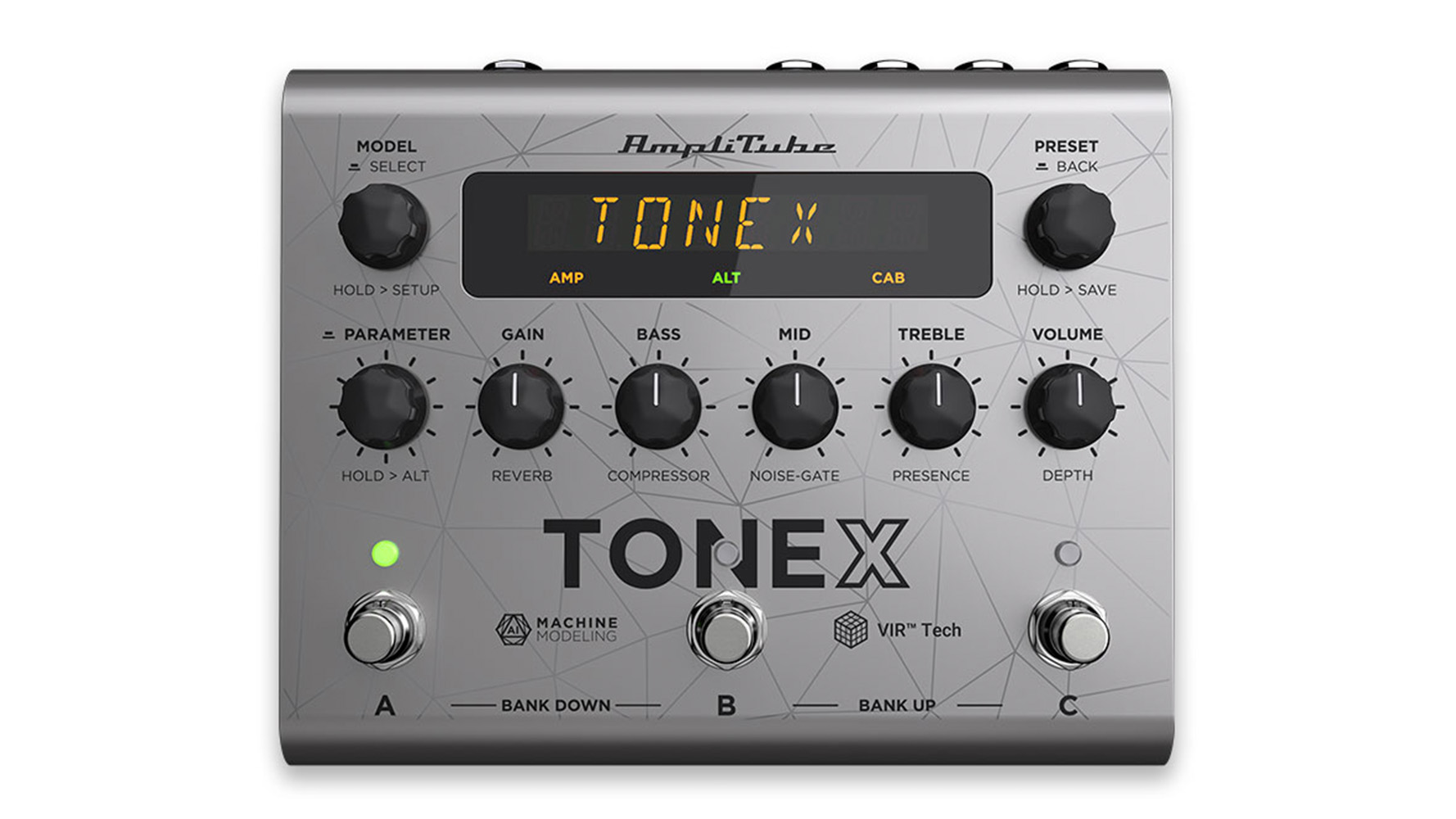
- Launch price: $429.99/£419/€429.99
- Type: Bass amp modelling unit
- Controls: Model, Preset and Parameter rotary controls, Gain, Bass, Mid Treble, Volume (all dual-purpose controls), 3x preset select switches
- Features: 150 presets, software package including TONEX CS plugin, TONEX Modeler and TONEX Editor, USB audio interface
- Connectivity: Input, stereo output (2x 1/4-inch jacks, unbalanced), headphones (1/4-inch), MIDI IO (5-pin DIN), external footswitch, USB
- Bypass: Buffered
- Power: 9-volt, 120mA
- Dimensions: 176x142x55 mm
- Weight: 32oz/906kg
- Options: N/A
- Contact: IK Multimedia
Build quality

Build quality rating: ★★★★☆
Build wise, the Bass Edition of the TONEX Pedal is not just similar, but identical to the regular TONEX Pedal. That’s because it is quite literally the same hardware, populated by a different set of Tone Models. The box is made from Aluminum and weighs in at a lightweight 160g.
Want all the hottest music and gear news, reviews, deals, features and more, direct to your inbox? Sign up here.
The three footswitches which are used for sound selection are the classic metal push-button design, and feel sturdy with noise-free operation. If you find that style of switch to be a little too easy to miss, pedal toppers could be a good idea, but I haven’t come across any issues while using the unit.
The control set comprises two endless rotary encoders which double as push-buttons either side of the screen, and a third on the leftmost side of the pedal for scrolling and changing parameters.
Beneath the display sits five traditional amp-style pots, each capped with decent-sized plastic knobs that are nicely spaced so that you’re not making unwanted changes. These default to classic preamp controls: Gain, Bass, Mid Treble and Volume, while also offering an alternative set of controls for Reverb, Compressor, Noise Gate, Presence and Depth.

The screen, while certainly welcome, feels a little understated with its alarm clock-style segmented LED display reminding me to update the time on my oven every time I look at it.
However, where competitor products are progressing towards full-colour and touchscreen visuals, it’s important to remember that part of the TONEX’s brief is to hit its €429.99 price ceiling, so some things inevitably do have to give.
Overall, it’s very solidly put together, and feels portable enough that attaching it to a board isn’t going to weigh things down, and while it’s potentially an extravagance as a ’backup’ to your main rig (the smaller Tonex One Bass Edition is a better prospect for that purpose), it’s light enough to put in a bag for that exact application. Speaking of which, a small gig bag would be a handy addition to IK Multimedia’s accessory line-up.
Usability
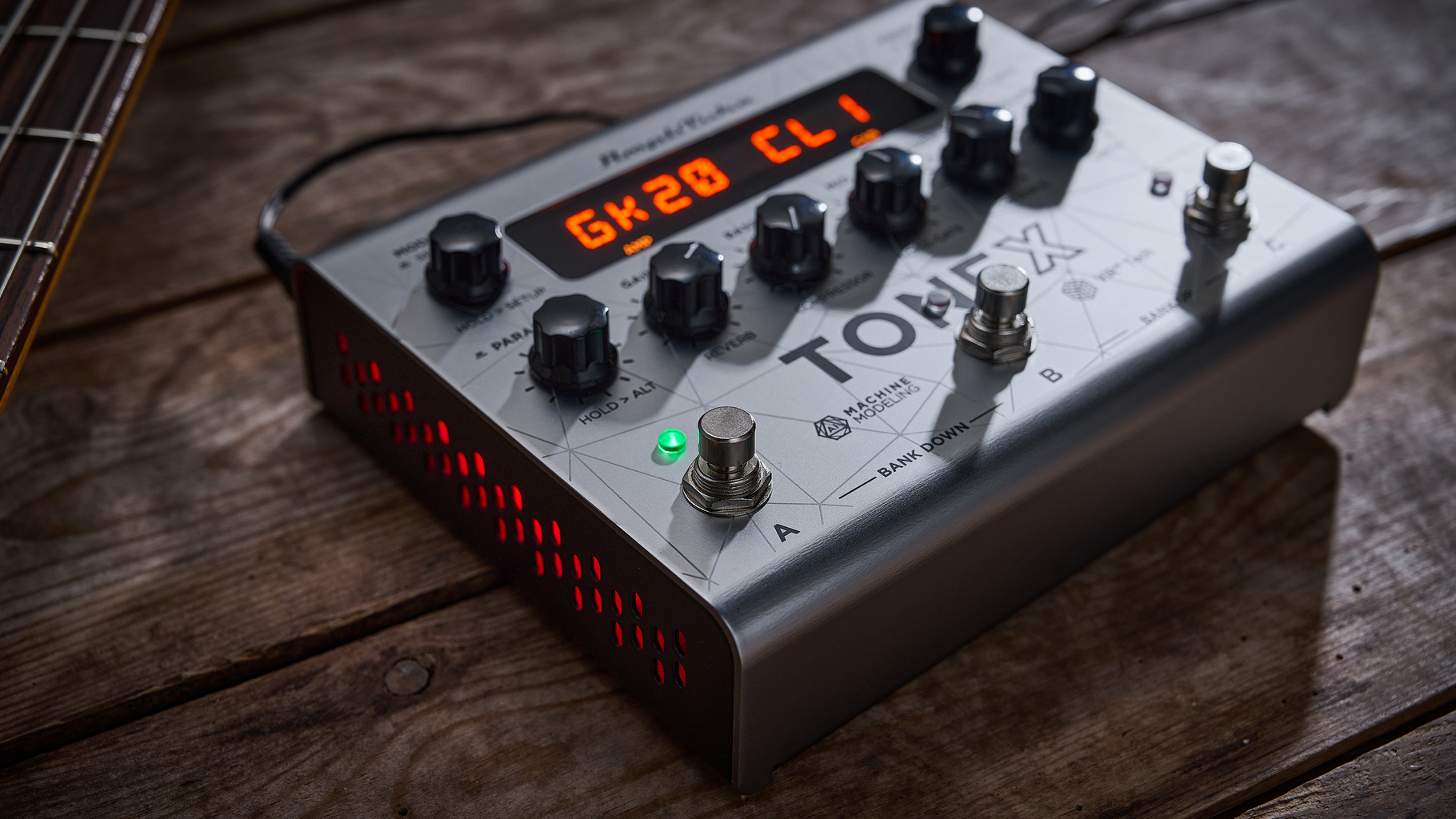
Usability rating: ★★★★☆
It’s undeniable that the factory-supplied sounds with the TONEX perform very well,
There are two ways to navigate the TONEX’s architecture. First is to treat it like any other pedal and use the hardware entirely in isolation. Second, you can hook it up to a computer and see an exploded view of the presets and their individual settings. The latter is by far the more friendly, but if you’re ever likely to use the pedal untethered from a computer, you’ll need to adapt to the navigation. It’s straightforward, in principle, and (as with any product containing this level of features), there’s no shortcut. It’s a case of diving in and getting used to terminologies and workflow. However, with a limited display, IK has opted for a reliance on scrolling text combined with color-coded illumination to help indicate the types of Tone Model you’re using, and whether your speaker emulation is provided via the Tone Model, an imported custom IR, or the TONEX’s VIR virtual speaker/mic modelling.
Thankfully, the main controls you’re likely to need on the fly are clearly labelled and easily accessible, but more complex editing from the pedal’s menu system requires some time spent learning the layout.
Editing via the Tonex Editor, however, is a pretty freeing experience. With every patch and component within it clearly visible, making changes within a preset, or renaming and organising presets is a lot easier and faster. The TONEX Editor also gives you a gateway to the Tone Net resource, which allows you to browse and download other peoples’ Tone Models for free.
Once downloaded, you can drop them into the pedal and store them within a preset. The TONEX can also operate as your audio interface, but to use it as such you have to switch the pedal to Interface mode. From here, you can decide whether you want it to send the processed sounds generated from the TONEX, or a dry DI signal, or, one of each.
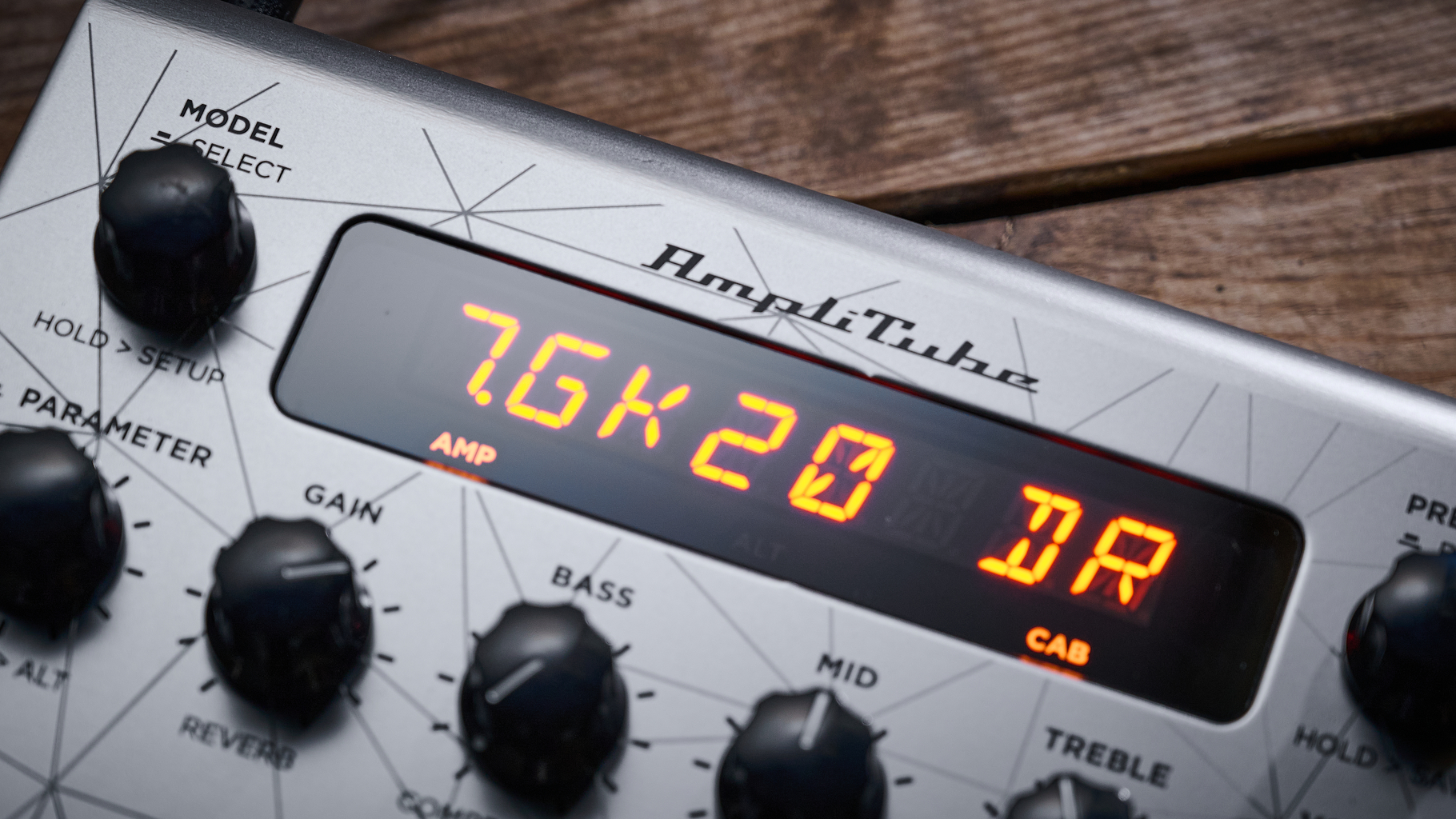
The latter option allows for re-amping your dry track back through the pedal later (or you can use the supplied TONEX plugin as your tone source). If you intend on using the TONEX more frequently as a studio tool, chances are you’ll be totally happy to keep it plugged into the computer, either as your interface or for editing.
But, away from the desk is where one of the Bass version of the TONEX’s biggest omissions lies. The TONEX is fairly well catered for when it comes to connectivity - there’s a stereo output bus, which is paralleled to a headphone output for silent practice and recording. There’s also the USB output, MIDI I/O offering comprehensive MIDI control over the internal parameters, and an external control socket for hooking-up an additional footswitch. But what there isn’t, is a DI socket, and the stereo outputs are unbalanced.
So, if you want to use this in a live setting to go straight to FOH, you’ll probably need to consider sending your signal via a DI box. Not the end of the world, but also a feature that would have been a useful inclusion, even at the expense of some of the other connectivity.
Sounds
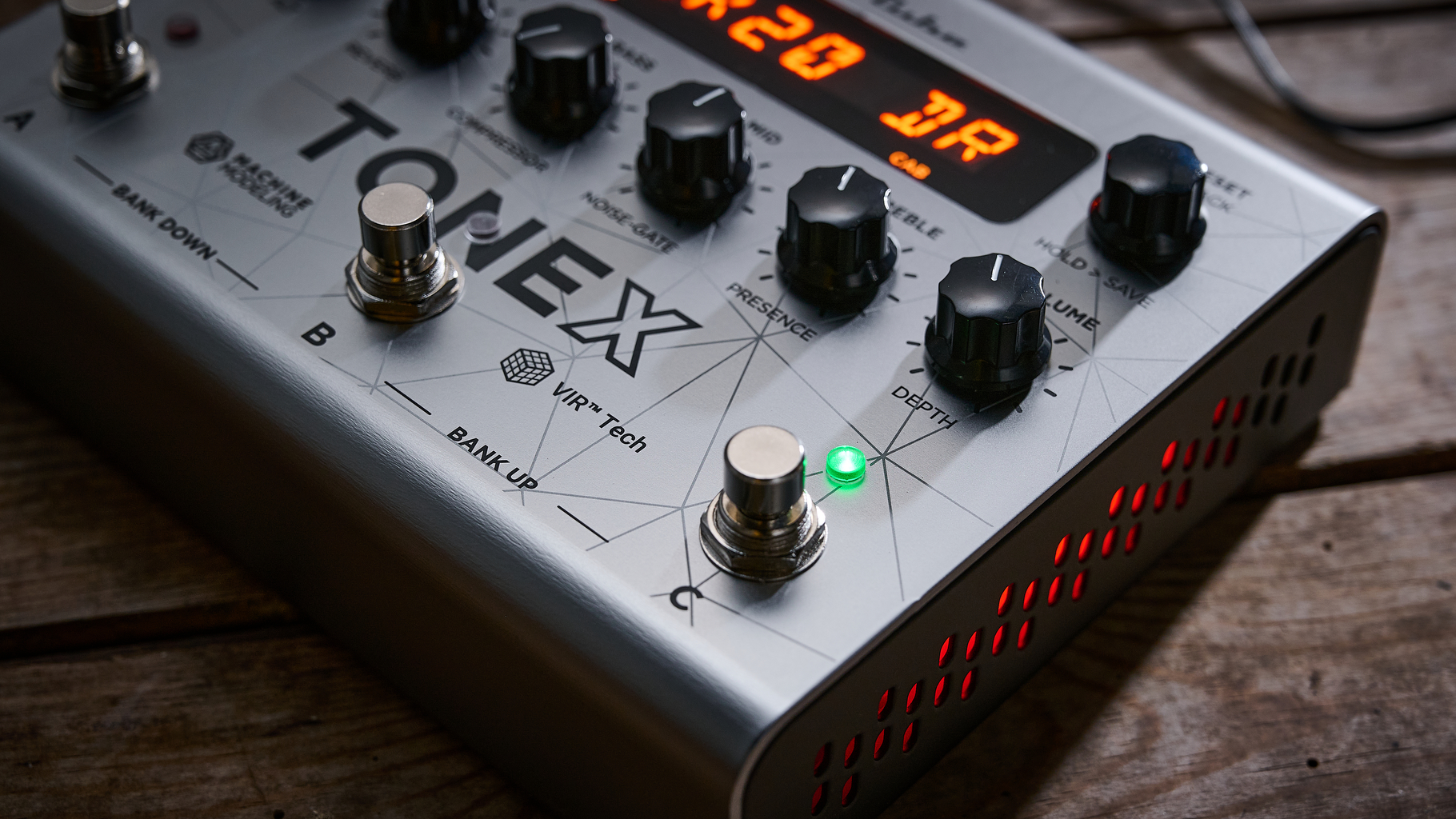
Sounds rating: ★★★★★
Be honest - how many bass sounds do you usually require within a set? Because with 150 to hand, there’s plenty of choice here. Now, due to the way the TONEX works - essentially snapshotting a static rig - those slots get filled a bit quicker than you might think. Yes, the on-board controls model and approximate what happens if you capture a clean sound and crank the gain up, but to truly model it, you’ll need to make captures of incremental changes in gain and tone in order to replicate them properly.
That also applies to the supplied Tone Models, so every bank comprises three variations on a Tone Model, typically (but not always) ranging from clean to dirty. But even so, there are still plenty of slots to play with.
A Tone Model can be created from anything from one or more stomp boxes, one or more stomp boxes into an amp, the same again including a cab, or an amp on its own. This comes with a caveat though, and that is that the effects can’t be time-based. So, that rules out anything dynamic or expressive such as delays, reverbs, wah pedals etc. and IK suggests that some pedals with parallel paths will also be off the menu.
Across the full range of presets there’s an almost overwhelming choice of tones, and the good news is, they sound fantastic. From pristine, studio-ready examples such as the Gallien Kruger RB800; to the 'modern' thump of the MarkBass MB58R; growling drive from the Ampeg SVT - all the way to the full wooly mammoth from distortion and fuzz-cloaked sounds from pedals such as the Fulltone OCD, Darkglass B7K - TONEX has certainly got you covered.

IK has made sure that there’s phase correlation between clean and dirty tones, too, so, by adjusting the Mix control, you can blend the two on any given patch to maintain clarity while also adding grit without losing the weight from your sound.
One final point that serves as an indicator that the TONEX hasn’t been designed entirely with bass players in mind comes from the included effects. There’s bass-friendly models with on-board compression, a gate and modulation (chorus, tremolo, phaser, flanger and rotary).
However, IK has also loaded the TONEX with the same delay and reverb offerings as the guitar version. While these could prove useful as occasional effects, they’re less likely to be go-to selections for a lot of players, where some pitch or filtering would have made these blocks more versatile.
Verdict
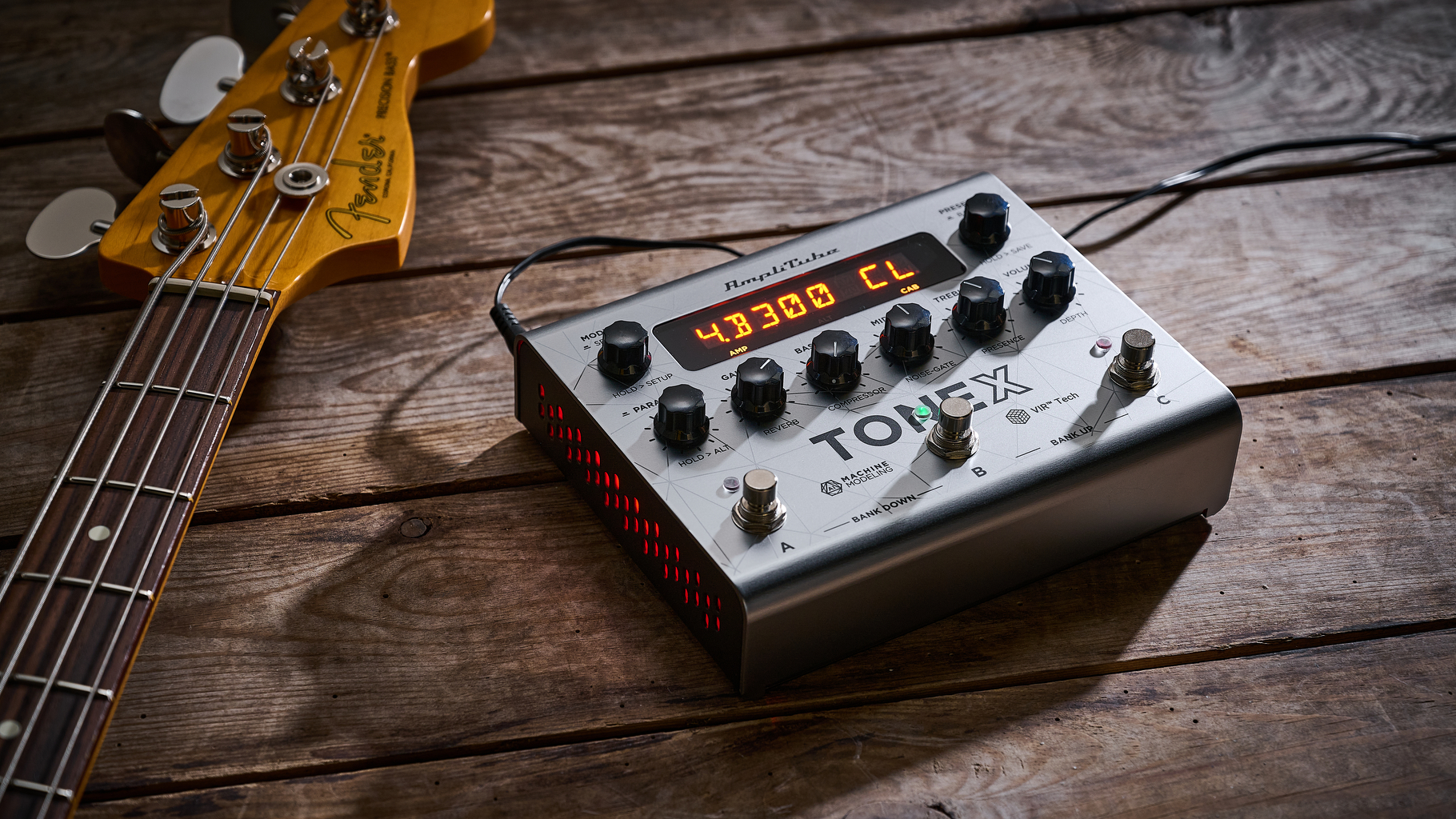
It’s undeniable that the factory-supplied sounds with the TONEX perform very well, and for most players, it’ll absolutely cover the core bass sounds required for any regular band setup. Within the parameters of tradition, it’s very hard to fault, tonally. However, step outside of that box and you’re going to require some more pedals, and thanks to the connectivity, a DI box.
As a recording and practicing tool, it’s excellent. Part of the hurdle comes in not just understanding what the TONEX is, but also what it isn’t - and that’s a multi-FX unit that will cover all the, er, bases.
The porting from a guitar product directly to bass does leave a couple of things lost in translation
It’s best viewed for it’s ability to deliver stellar recorded tones into a DAW, or, with the right external connectivity, as a replacement for hulking a head, combo or possibly a cab to your gig.
Obviously, the trade-off comes with reduced flexibility - there’s no effects loop, and you might still want to plug in some external pedals, provided you can use them in front of the TONEX. It’s very good, but the porting from a guitar product directly to bass does leave a couple of things lost in translation. Get over those and you have an excellent-sounding modeller that will serve you well for many styles.
MusicRadar verdict: Overall, the TONEX Pedal Bass Edition dishes-up over and above the number of traditional bass sounds you're likely to need. With a DI box and some time to learn the layout, it's a robust, reliable and ridiculously well-equipped powerhouse for the stage and studio.
Test | Results | Score |
|---|---|---|
Build quality | As with the original TONEX pedal, this thing is sturdy and built to last. | ★★★★☆ |
Usability | Finding presets and making simple tonal tweaks is easy, but getting under the hood requires a bit of learning. | ★★★★☆ |
Sounds | There's no argument, it sounds fantastic and there are plenty of models to explore. | ★★★★★ |
Overall | Tonex Pedal Bass Edition is packed with great sounds and very well built. There are a couple of things missing that would make it perfect. | ★★★★☆ |
Also try
Line 6 HX Stomp
Price $599/£571
Line 6's mini-Helix still takes a lot to beat when it comes to comprehensive modelling and effects. There's plenty on offer for bass players too, with the added bonus of a wide range of effects and a loop for external pedals.
Neural DSP Nano Cortex
Price $549/£499
Neural's Nano Cortex sees the Quad Cortex paired-down into a portable box capable of not only running Neural Captures, but creating them too. The factory bass Captures aren't as varied as the TONEX, but through Cortex Cloud you can access thousands.
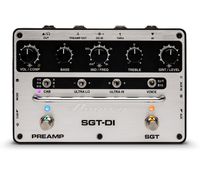
Ampeg SGT-DI
Price $399/£342
Ampeg's SGT-DI delivers a more focused offering of Ampeg's SVT and B15 amps. There are six speaker IRs with slots for three of your own, a built-in compressor a dedicated DI over an XLR socket and more. Perfect if you don't want to get bogged-down in menus.
Hands-on videos
IK Multimedia

TSR - Jivey Talks Tech
Deadbeat Studios

Stuart has been working for guitar publications since 2008, beginning his career as Reviews Editor for Total Guitar before becoming Editor for six years. During this time, he and the team brought the magazine into the modern age with digital editions, a Youtube channel and the Apple chart-bothering Total Guitar Podcast. Stuart has also served as a freelance writer for Guitar World, Guitarist and MusicRadar reviewing hundreds of products spanning everything from acoustic guitars to valve amps, modelers and plugins. When not spouting his opinions on the best new gear, Stuart has been reminded on many occasions that the 'never meet your heroes' rule is entirely wrong, clocking-up interviews with the likes of Eddie Van Halen, Foo Fighters, Green Day and many, many more.
You must confirm your public display name before commenting
Please logout and then login again, you will then be prompted to enter your display name.
